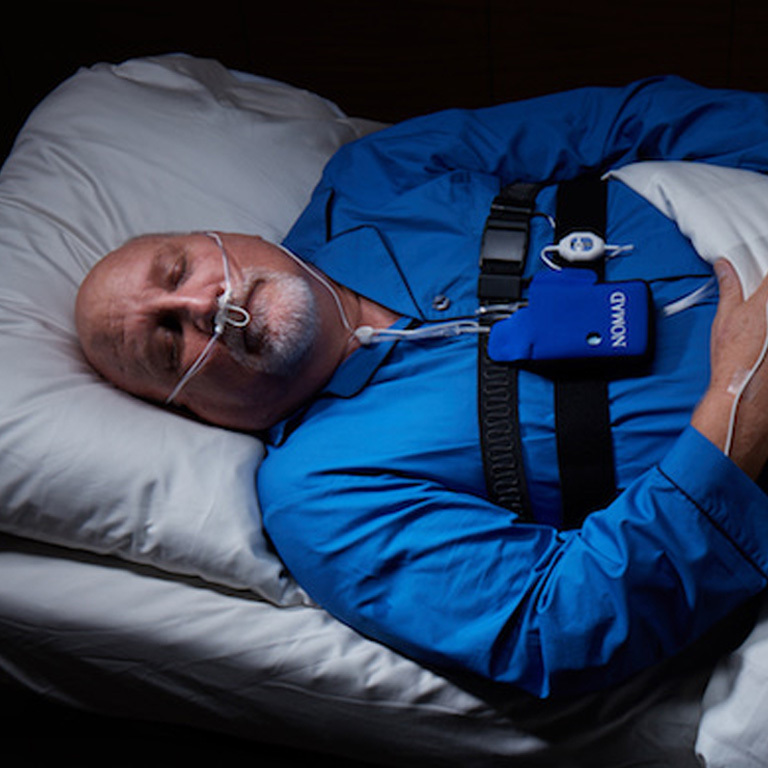Exactly How a Rest Research Can Transform Your Rest Patterns: Insights and Services Available
A sleep research study acts as a necessary device for individuals seeking to understand and improve their sleep patterns. It uses a comprehensive evaluation of sleep habits and possible problems. By evaluating different metrics, medical care specialists can identify underlying issues that disrupt corrective remainder. This process not only help in medical diagnosis yet additionally establishes the stage for tailored treatment strategies. What understandings might a rest research reveal concerning your very own sleep routines?
Understanding Sleep Researches: What to Anticipate
They frequently wonder what the experience will involve when people prepare for a sleep research. These research studies, typically conducted in a rest facility, objective to keep an eye on different physical parameters throughout sleep. Upon arrival, individuals are greeted by experienced professionals who assist them with the procedure. The environment is developed to be comfortable, permitting for a natural rest experience. Participants may be asked to fill up out surveys concerning their sleep behaviors and medical background, which assists in the evaluation.
As the night advances, sensing units are connected to the body to track brain waves, heart rate, and breathing patterns. While the setup might really feel unusual, the goal is to collect accurate data on the person's rest patterns. The whole procedure is non-invasive and postures no threat to the individual. Ultimately, the data gathered throughout the rest research study is essential for identifying prospective rest problems and developing effective therapy strategies.
Usual Rest Disorders Determined With Sleep Studies
Sleep researches play a necessary function in recognizing numerous sleep disorders that can greatly impact an individual's health and well-being. Typical problems spotted through these researches include obstructive rest apnea, identified by repeated interruptions in breathing throughout sleep, resulting in fragmented rest patterns. Another widespread condition is sleeping disorders, which involves trouble falling or remaining asleep, usually leading to daytime exhaustion and impaired performance. Troubled legs syndrome (RLS) is likewise often observed, creating uneasy sensations in the legs and an uncontrollable urge to relocate them during the night. Narcolepsy, a neurological disorder that affects sleep-wake cycles, is an additional serious condition recognized in sleep research studies, bring about excessive daytime sleepiness and abrupt sleep strikes. Finally, parasomnias, which encompass uncommon actions throughout rest, such as sleepwalking or evening fears, are likewise kept in mind. Early identification of these conditions can facilitate timely intervention and improve general rest high quality.
The Refine of a Rest Study: From Preparation to Results
The procedure of a sleep research may seem challenging, it is a structured and systematic method made to collect crucial details concerning an individual's rest patterns. At first, a doctor conducts a thorough assessment, going over rest history and signs with the patient. This evaluation helps determine the particular focus of the research.
Prep work normally involves standards on sleep hygiene and medicine modifications prior to the study. Patients might be advised to stay clear of caffeine and alcohol to ensure exact results. On the evening of the study, electrodes and sensing units are put to monitor mind task, heart price, breathing, and motions throughout rest.
The data gathered is carefully analyzed by rest experts, that identify any patterns or problems a sign of sleep conditions. Following this analysis, a follow-up assessment is organized to go over the searchings for and prospective treatment choices tailored to the individual's demands, helping with enhanced rest top quality.

Sorts Of Sleep Researches: In-Lab vs. Home Rest Examinations
2 primary kinds of rest research studies exist: in-lab researches and home rest examinations, each satisfying various demands and circumstances. In-lab research studies usually occur in a rest center where individuals are kept track of over night by health care professionals. This technique enables thorough data collection on various rest parameters, such as brain task, oxygen degrees, and heart price. Clients are often attached to numerous sensing units, giving thorough insights right into their rest disorders, including sleep apnea and narcolepsy.
Alternatively, home rest examinations use an easier choice for people who choose to conduct analyses in their own environment. These portable gadgets keep an eye on vital metrics like air flow, oxygen saturation, and snoring. While home tests are less thorough than in-lab research studies, they function as a useful option for diagnosing usual sleep conditions. Inevitably, the choice between these 2 types of sleep researches depends on specific preferences, clinical needs, and the seriousness of sleep-related issues.
Analyzing Your Rest Research Results: Trick Metrics Explained
Comprehending the results of a sleep research is important for clients looking for insights into their sleep health. Trick metrics normally analyzed in rest studies consist of the Apnea-Hypopnea Index (AHI), which measures the number of apneas and hypopneas per hour of rest. AHI values aid identify the seriousness of rest apnea, with greater scores suggesting much more considerable issues. An additional essential metric is the total rest time (TST), which reflects the general period of sleep during the research study. Sleep performance, the ratio of time invested asleep to time spent in bed, is also important; greater percentages show better sleep high quality. In addition, the percent of sleep invested in various stages-- light, deep, and REM-- gives insights into rest architecture. Comprehending these metrics gears up individuals with the understanding required to review their rest patterns with health care suppliers, leading the means for notified choices about their sleep wellness.
Therapy Choices and Suggestions Based Upon Your Sleep Research study
When a rest research study reveals additional resources concerns such as rest apnea or other rest conditions, numerous therapy alternatives and suggestions end up being readily available to boost general rest health. For obstructive rest apnea, constant favorable respiratory tract pressure (CPAP) therapy is typically prescribed, providing a steady stream of air to keep respiratory tracts open during sleep. Oral appliances might be recommended for moderate to moderate cases, repositioning the jaw to stop respiratory tract blockage.
In situations of sleep problems, cognitive behavior modification for sleep problems (CBT-I) is frequently recommended, concentrating on behavioral changes and believed patterns that interrupt sleep. In addition, lifestyle alterations such as weight loss, routine workout, and avoiding alcohol or caffeine before going to bed might improve sleep high quality.
,aspect=fit)
Building Healthy And Balanced Rest Habits: Tips for Better Rest
Structure healthy rest habits is crucial for achieving restorative remainder. Establishing a consistent rest regimen, limiting display time prior to bed, and creating a comfortable sleep atmosphere can significantly improve rest quality. These methods act as fundamental actions for people looking for better sleep outcomes.
Develop a Rest Regimen
Developing a consistent rest routine is important for promoting healthy rest habits and improving general well-being. Sleep Study Bangalore. A normal rest timetable, where people go to sleep and awaken at the same time each day, reinforces the body's natural circadian rhythms. This predictability assists control the sleep-wake cycle, resulting in improved rest quality. Producing a calming pre-sleep ritual, such as analysis or practicing relaxation techniques, can signal the body that it is time to unwind. In addition, maximizing the rest setting-- by maintaining a comfy temperature, reducing sound, and making certain darkness-- can better support relaxing sleep. By prioritizing these techniques, people can cultivate a sustainable sleep regimen that cultivates restorative rest and adds to far better mental and physical wellness
Restriction Display Time
As people increasingly count on screens for entertainment and interaction, restricting screen time prior to bed has come to be essential for promoting much better rest. Research study indicates that direct exposure to blue light discharged by gadgets such as tablets, smart devices, and computer systems can conflict with the production of melatonin, the hormone responsible for regulating sleep. Experts recommend turning off screens at least one hour before going to bed to improve rest quality. Engaging in alternative activities, such as practicing or reviewing a publication leisure methods, can aid individuals prepare and loosen up for rest. By purposely reducing display time, individuals can cultivate much healthier sleep patterns, resulting in boosted total wellness and enhanced daytime awareness. Prioritizing this facet of sleep health is important for lasting wellness.
Produce a Rest Haven
Creating a rest shelter read this can greatly boost an individual's ability to accomplish restful sleep. This setting ought to prioritize convenience and harmony, incorporating elements that advertise relaxation. An ideal cushion and cushions are vital, as they straight effect sleep top quality. In addition, the area should be dark, peaceful, and cool; using power outage curtains and white sound devices can facilitate this environment. Customizing the area with relaxing shades and fragrances, such as lavender, can even more boost relaxation. Minimizing clutter also adds to a tranquil environment, enabling mental clarity - Sleep Study Bangalore. By thoughtfully designing a sleep shelter, people can cultivate much healthier sleep behaviors and develop a consistent routine, inevitably causing boosted general well-being and restorative remainder
Regularly Asked Concerns
For how long Does It Take to See Improvements After a Sleep Study?
Improvements after a sleep research study can vary, yet numerous individuals start to observe positive modifications within a few weeks. Constant follow-up and adherence to advised treatments play crucial roles in attaining optimal results.

Can Kid Undergo Rest Studies, and Exactly How Are They Various?
Yes, children can undergo rest studies, which vary from adult studies in checking strategies and equipment. Pediatric evaluations often entail child-friendly settings and might consist of moms and dad engagement to ensure comfort and accurate outcomes.
Are Sleep Research Studies Covered by Insurance, and What Are the Expenses?
Rest researches can be covered by insurance, relying on the policy and medical necessity. Expenses vary extensively, ranging from $300 to $3,000, influenced by the sort of research study and location of read what he said the center.
What Lifestyle Adjustments Can Enhance the Effectiveness of Sleep Study Outcomes?

Carrying out constant sleep timetables, decreasing caffeine intake, developing a relaxing bedtime regimen, and keeping a comfortable rest setting can greatly boost the effectiveness of sleep research results, promoting better sleep quality and total health.
Exactly how Typically Should I Repeat a Rest Study for Ongoing Issues?
People experiencing recurring rest concerns ought to consider repeating a sleep research every one to 2 years, or as recommended by healthcare specialists, to keep track of modifications and adjust treatment plans successfully based on their developing sleep patterns. (Sleep Study Bangalore)
Sleep researches play an essential role in determining numerous rest problems that can significantly impact an individual's health and well-being. Typical conditions discovered with these researches include obstructive rest apnea, identified by duplicated disturbances in breathing throughout sleep, leading to fragmented rest patterns. When a sleep research reveals issues such as rest apnea or other rest disorders, different treatment alternatives and referrals end up being readily available to enhance general rest wellness. Developing a consistent rest routine, restricting display time before bed, and creating a comfortable sleep atmosphere can greatly improve rest high quality. In addition, enhancing the sleep atmosphere-- by preserving a comfy temperature level, minimizing sound, and making sure darkness-- can further support relaxed rest.